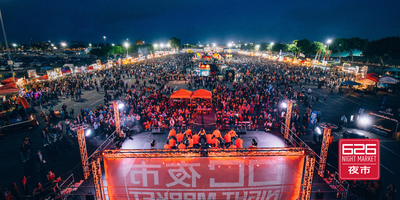Bullet train creates 'cultural corridor' - Chinadaily.com.cn
By Qiu Quanlin in Guangzhou and He Chun in Changsha | China Daily | Updated: 2025-06-05 09:24 


Since its launch in June last year, high-speed train G6080 has departed from West Kowloon Station in Hong Kong every morning, heading for Zhangjiajie West Station in Hunan province.
Along the country's first major transportation artery linking the Guangdong-Hong Kong-Macao Greater Bay Area with the western area of Hunan, the Fuxing bullet train traverses Guangdong province and dozens of mountains and valleys in Hunan in six hours and 22 minutes.
The route forms a 1,077-kilometer "landscape and cultural corridor" connecting 21 scenic areas of 4A level and above.
Known as the "mountain-water economic artery", the line has transported over 500,000 passengers so far, according to China Railway Guangzhou Group.
"More trains have been put into operation, with passenger flow at stations along the route continuously rising," said Wang Xiaonian, one of the founding members of the Huaihua South Station, a key stop along the West Kowloon-Zhangjiajie West railway line.
Over the past decade, the station's daily passenger volume has surged from less than 2,400 to over 42,000. With the launch of the service, Huaihua has become an integral part of the transportation network linking the Greater Bay Area and the western part of Hunan, according to Wang.
"The station has also seen an increasing number of business travelers and tourists boarding the trains," he said.
The operation of the West Kowloon-Zhangjiajie West high-speed rail service has unfolded a new chapter for regional coordinated development, according to China Railway Guangzhou Group, with the number of Hong Kong tourists traveling to western Hunan increasing by 57 percent since the service was launched. Tourists who travel along the route to Hong Kong for shopping or studies now account for 23 percent of the passenger flow.
Since early this year, more than 820,000 inbound tourists have headed to major attractions in Zhangjiajie, a 69 percent year-on-year increase.
In addition, the high-speed rail stations have brought unexpected gains for local ethnic groups.
A booth in Jishou East Station in Hunan displays traditional crafts of the Miao ethnic group, including exquisite Miao embroidered clothing, embroidered folding fans and delicate embroidered sachets, along with characteristic agricultural and sideline products such as Camellia oil.
Following the operation of the high-speed train service, the village's annual collective income surpassed 5 million yuan ($696,000) for the first time in 2024, according to the Miao cooperative.
During Spring Festival this year, the highest daily passenger flow at Jishou East Station exceeded 20,000 people, marking a 180 percent increase compared to the opening period.
"The vital transportation artery not only transports travelers to faraway places but also helps more people get closer to treasures like Miao embroidery hidden in the deep mountains," said Wang Jianwei, Party chief of the Jishou East Station.
Contact the writers at [email protected]










